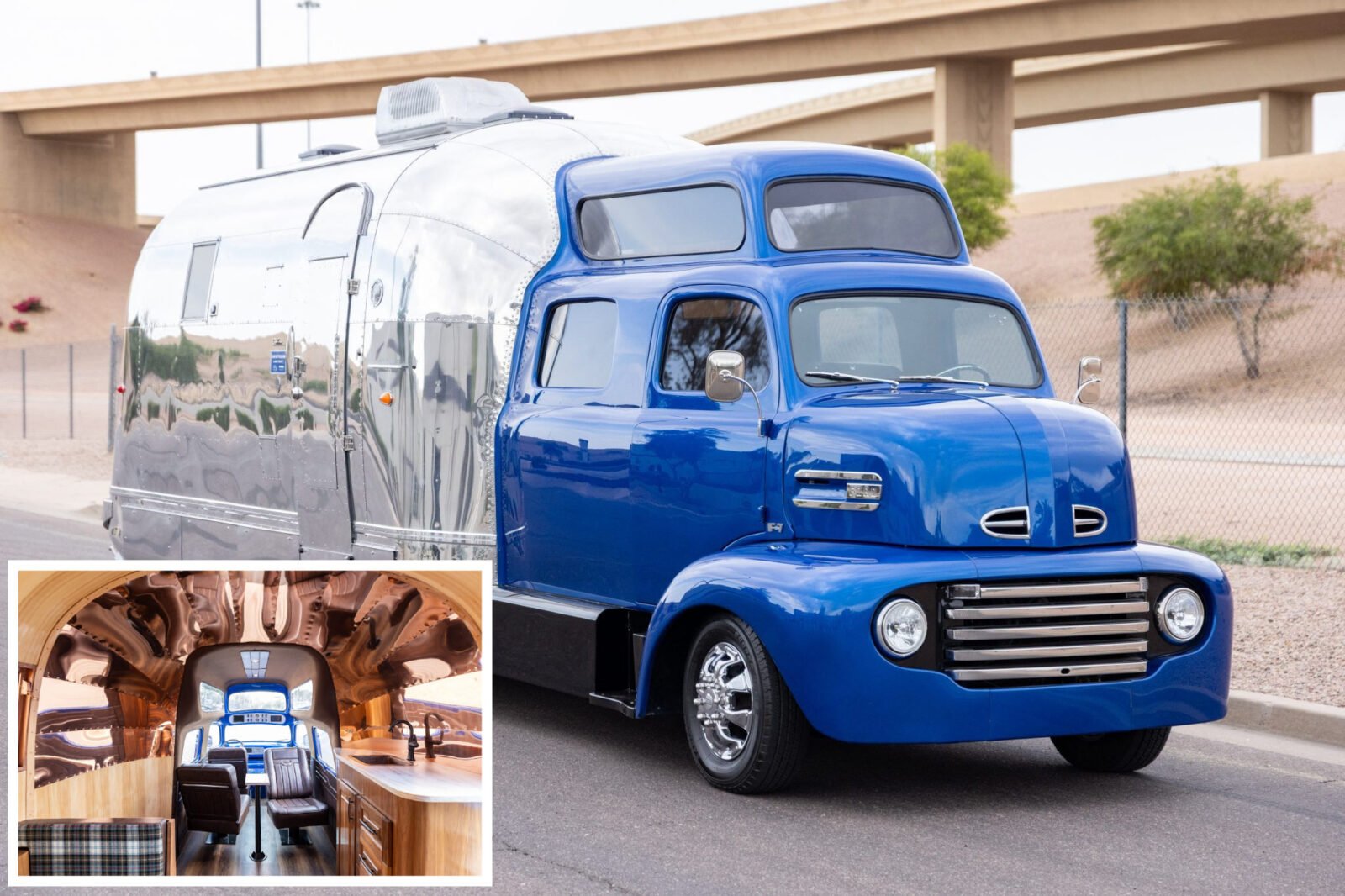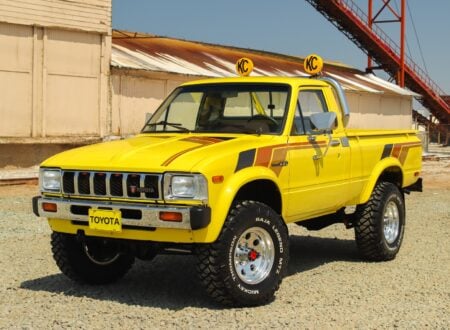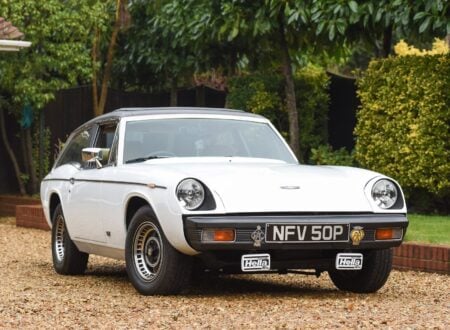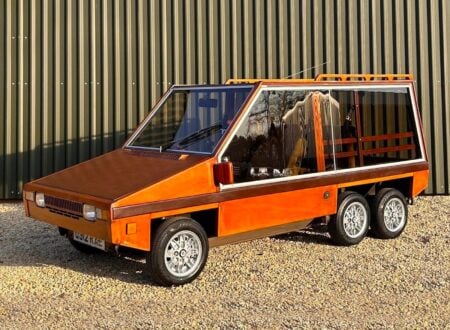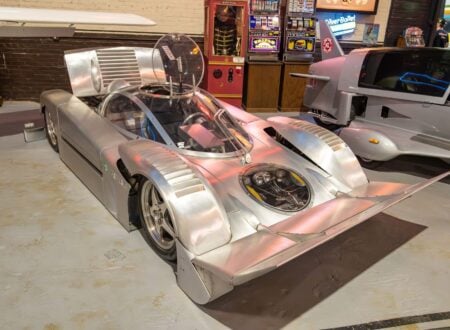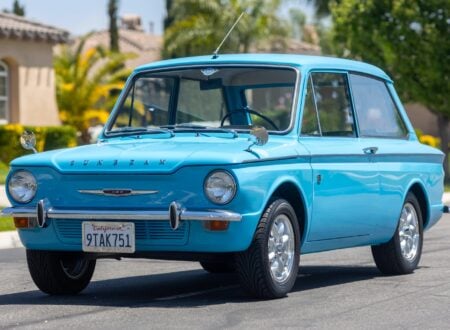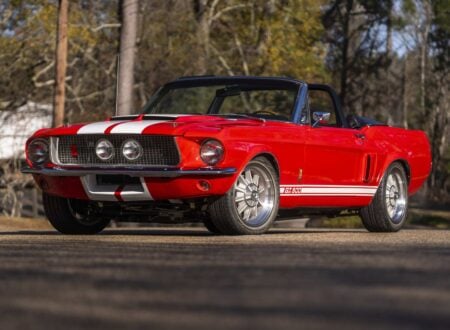This is a motorhome built using the cab of a 1948 Ford COE truck and an Airstream travel trailer from the same period. The two have been modified and joined together, creating one of the most tasteful RVs we’ve seen in some time.
The entire assembly is fitted to a General Motors P30 chassis, this was a chassis designed from the outset for commercial and RV use – and it’s formed the underpinnings of countless thousands of RVs from the 1960s through to the early 2000s.
Fast Facts: Ford COE x Airstream Motorhome
- This unique motorhome merges a 1948 Ford COE truck cab and an iconic period Airstream trailer, mounted on a General Motors P30 chassis specifically designed for RV applications. The integration results in a vintage-looking yet highly functional motorhome with excellent craftsmanship and thoughtful, practical upgrades for modern usability.
- Originally introduced in 1948, the Ford COE truck featured a cab-over-engine design that maximized load capacity in the rear, as well as urban maneuverability. Though the early non-tilting cabs made maintenance challenging, the COE offered superb visibility. Later replaced by Ford’s tilting C-Series in 1957, these original Ford COE trucks are now rare collector vehicles.
- The Airstream trailer traces back to Wally Byam’s streamlined designs of the 1930s, inspired by aircraft technology and constructed from riveted aluminum. These visually-stunning trailers soon became synonymous with comfortable, tasteful travel. Airstream survived through the Great Depression and WWII, maintaining their signature aerodynamic, polished aluminum appearance right through into the modern era.
- This custom-built motorhome is powered by a Chevrolet 454 V8 with a number of performance upgrades like Holley Sniper EFI and Sanderson headers – it’s mated to a TH400 automatic transmission. Its luxurious interior includes premium upholstery, climate control, polished copper and wood panelling, and contemporary amenities with fully equipped living quarters, offering a bathroom, kitchen, sleeping, and dinette area.
The Ford COE
The Ford C-Series COE (Cab-Over-Engine) truck was one of the longest-lived commercial truck platforms in American history, built from the late 1940s to 1990 and it helped define the look and function of mid-century cab-over designs.
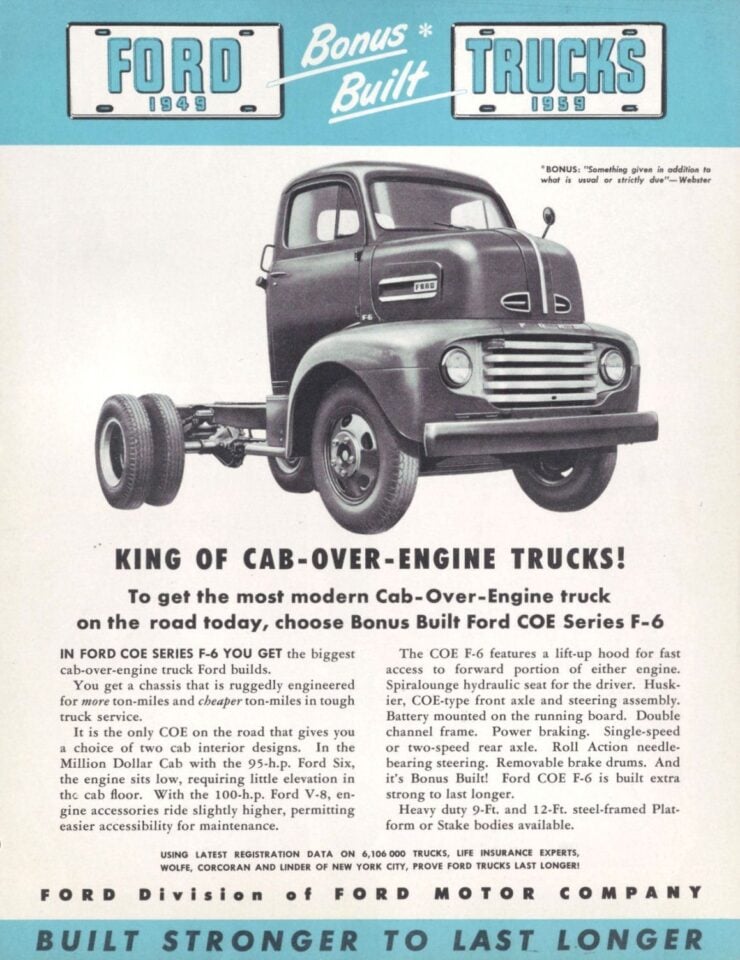

The 1948 model marked Ford’s first postwar COE, based on the then-new F-Series platform introduced that same year. It featured a high-mounted cab placed above the engine, a flat-faced grille with vertical bars, and a commanding driving position with excellent forward visibility.
These early postwar COEs were available in heavier-duty versions of the F-Series, like the F-5 and F-6, and they used a range of inline-six and flathead V8 engines. The design wasn’t just a stylistic shift – it reflected the growing need for trucks that could haul heavier loads in increasingly crowded cities and urban areas.
In 1957, Ford replaced the early COE line with the modern C-Series. These had a fully tilting fiberglass-and-steel cab that dramatically improved serviceability. The new design also offered improved visibility and more ergonomic interiors to help keep drivers happy.
The C-Series was adaptable – its chassis could support box vans, fire engines, tow trucks, and more. Engine options evolved to include Ford’s 361 and 391 FE-series V8s, and diesel choices from Cummins and Caterpillar were added as demands for efficiency and hauling power grew in fleet use applications.
By the late 1980s, regulations and market trends began to favor conventional cabs, and Ford discontinued the C-Series in 1990. It was replaced by the Ford Cargo, a forward-control model developed in Europe. Today, both the 1948 COE and the later C-Series are rare to see on the road, but they’re appreciated by the small band of collectors who specialize in them.
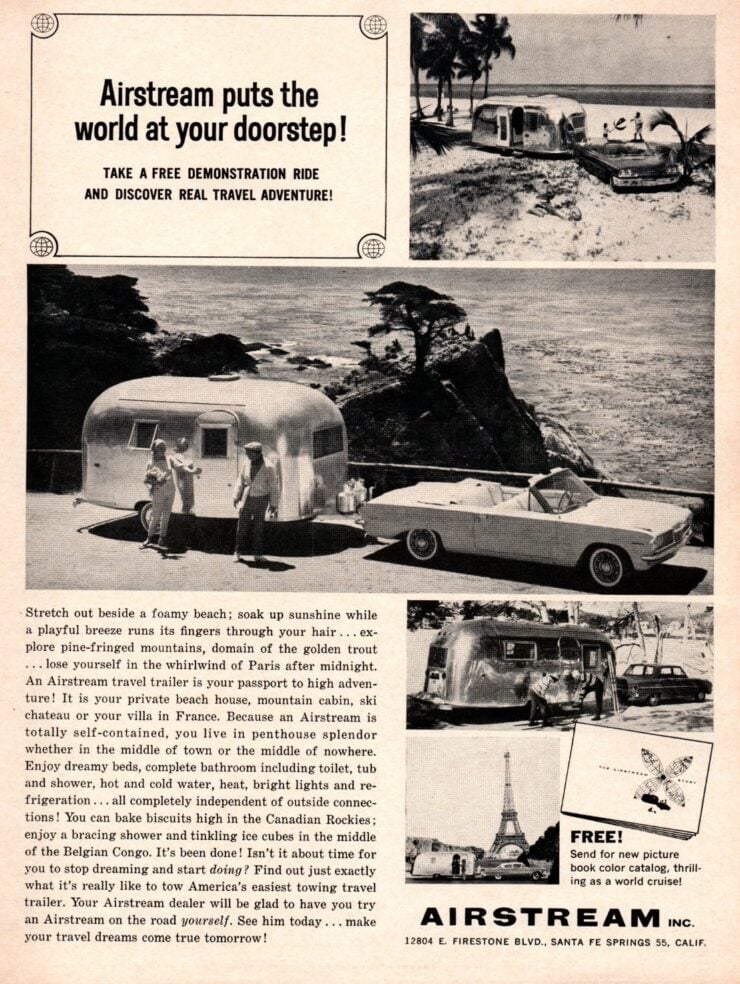

The Airstream Travel Trailer
The Airstream travel trailer can trace its origins back to 1931, when Wally Byam began building streamlined trailers in California, though at this time they weren’t yet made from aluminum. Byam, a former advertising copywriter and magazine publisher, had earlier built a trailer on a Model T chassis to make camping more comfortable. He was encouraged by the groundswell of interest from friends and strangers, and so he began producing trailers commercially.
The first Airstream, called the Clipper, was introduced in 1936. It was inspired by the Bowlus Road Chief, which was the original riveted aluminum trailer designed by Hawley Bowlus, who had helped build the Spirit of St. Louis. The Clipper featured a lightweight, aerodynamic aluminum monocoque shell and aircraft-style construction.
Airstream purchased the Bowlus Road Chief production rights when Bowlus’ business failed, and the company adopted many of the same construction techniques.
Airstream was the only major travel trailer company to survive the Great Depression and it resumed full production after World War II, when demand for leisure travel surged. The postwar models, like the Liner and Cruiser, kept the riveted aluminum bodywork that quickly became the brand’s hallmark.
The Ford COE x Airstream Motorhome Shown Here
This is a custom 1948 Ford F-5 COE that was transformed over the course of eight years into a unique camper with a full Airstream trailer integrated at the rear.
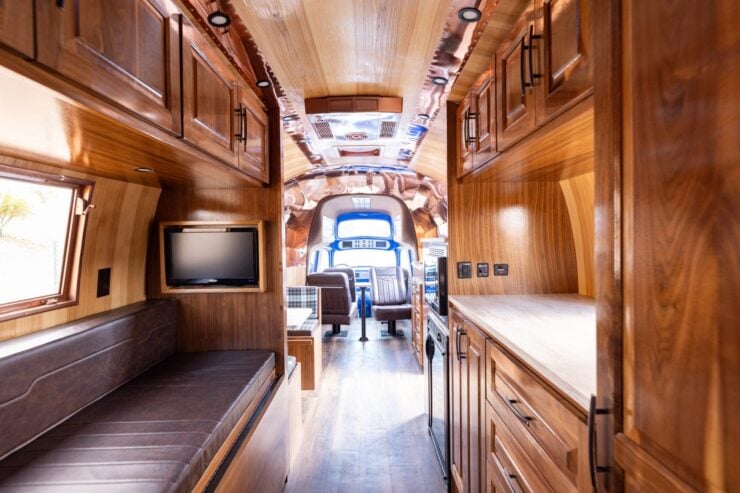

The builder did a remarkable job of combining a stretched Ford cab-over-engine cab with an additional roof section for headroom, then adding a polished aluminum Airstream trailer to provide the living quarters. The final vehicle measures in at approximately 30 feet long, 8 feet wide, and 12 feet high.
It rides on a GM P30 chassis which has been fitted with air suspension for improved ride quality over the original springs. Power comes from a Chevrolet 454 cubic inch V8 that’s been bored out and upgraded with an RV cam, roller rockers, Holley Sniper EFI, and Sanderson headers.
This engine is paired with a TH400 3-speed automatic transmission and a 4.10:1 rear axle. Braking is handled by a hydroboost-assisted system with front discs and rear drums. The body received a ceramic coating to protect it when out on the road, and it rolls on 16-inch American Racing wheels shod with Cooper tires.
The cab has Tobacco Leaf leather upholstery, digital gauges, a tilt steering column, Vintage Air climate control, and a Pioneer touchscreen system with a backup camera. Inside the camper section, the fit-out includes wood-look vinyl flooring, solid-surface countertops, LED lighting, copper sink fixtures, polished copper sheet at both ends, and a functional bathroom with shower and toilet.
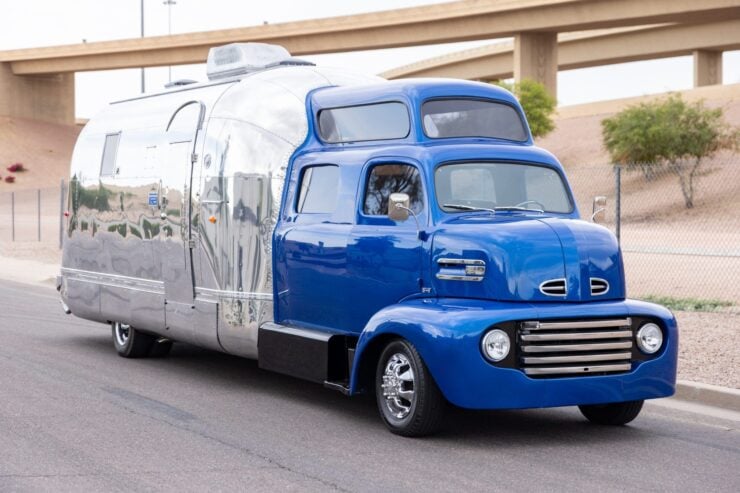

The kitchen and lounge areas were designed for both comfort and functionality, with a reversible dinette and fold-out bed. An Onan generator and roof-mounted air conditioning keep things comfortable regardless of what’s happening outside, and it has 25 gallon fresh water and 35 gallon blackwater tanks.
It’s now being offered for sale out of Elizabeth, Colorado with records, build photos, and a clean Arizona title in the seller’s name. If you’d like to read more about it or place a bid you can visit the listing here.
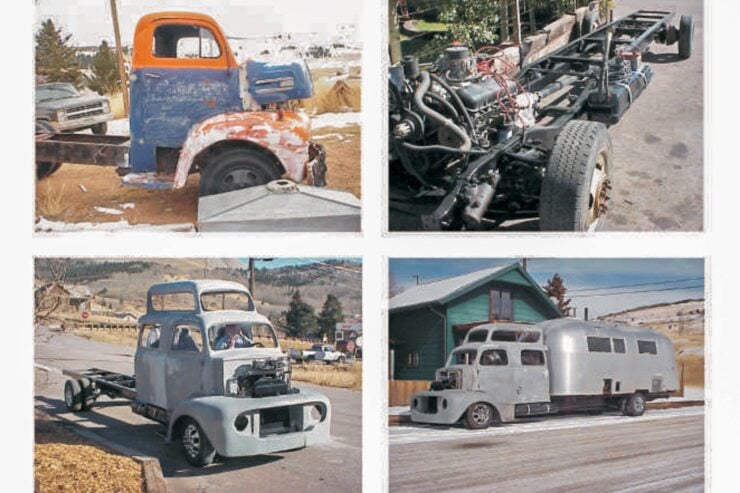
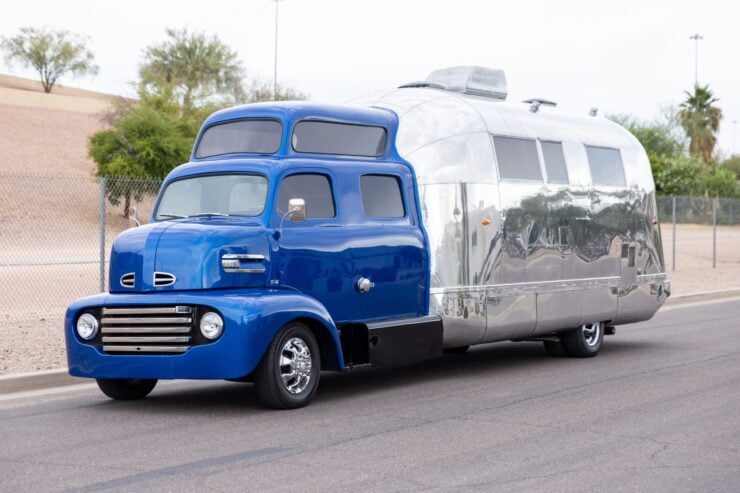
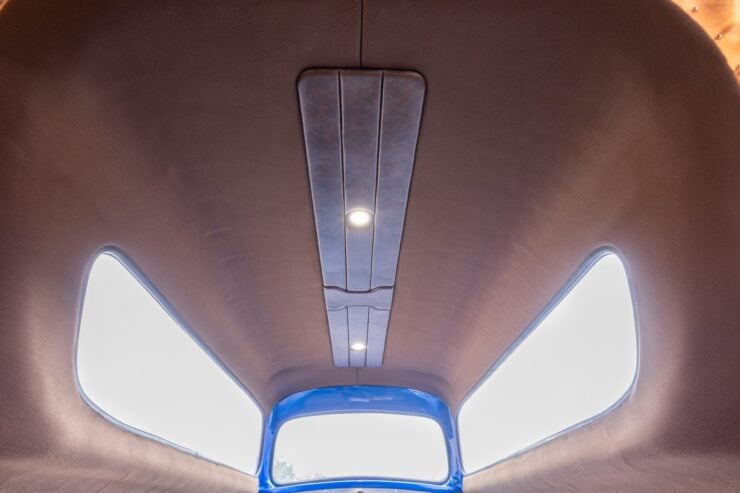
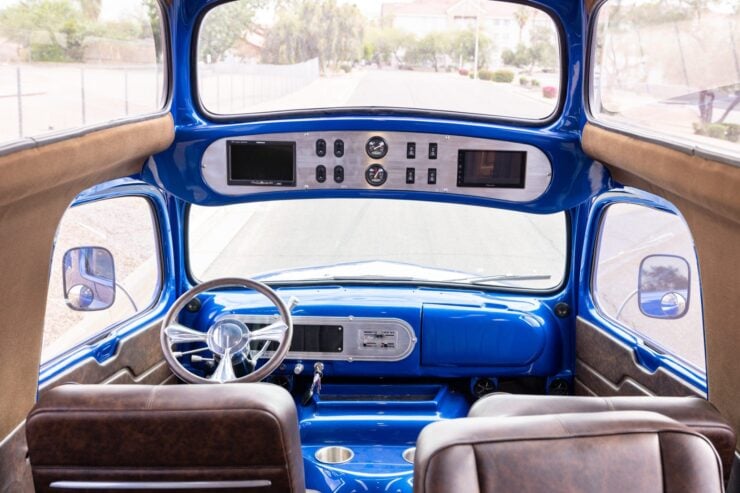
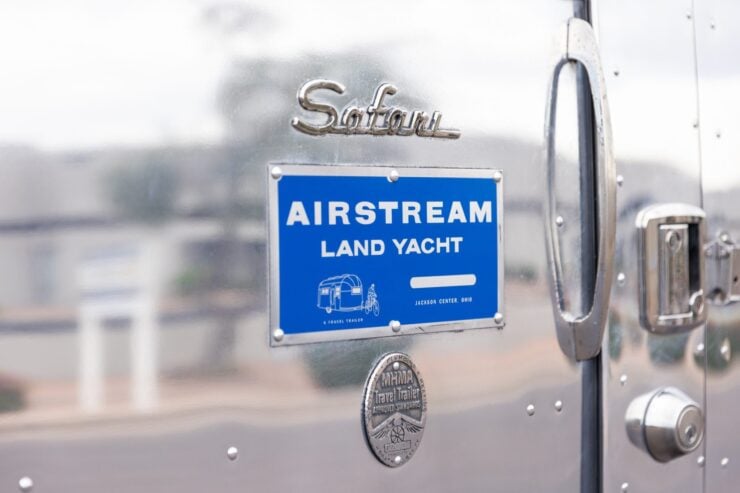
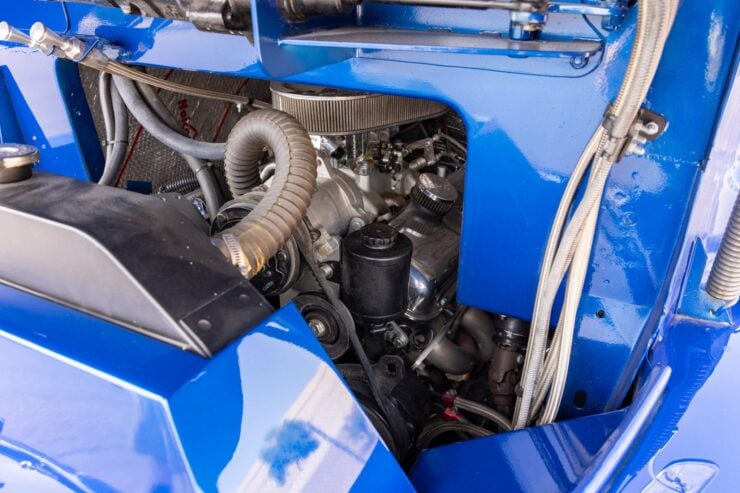
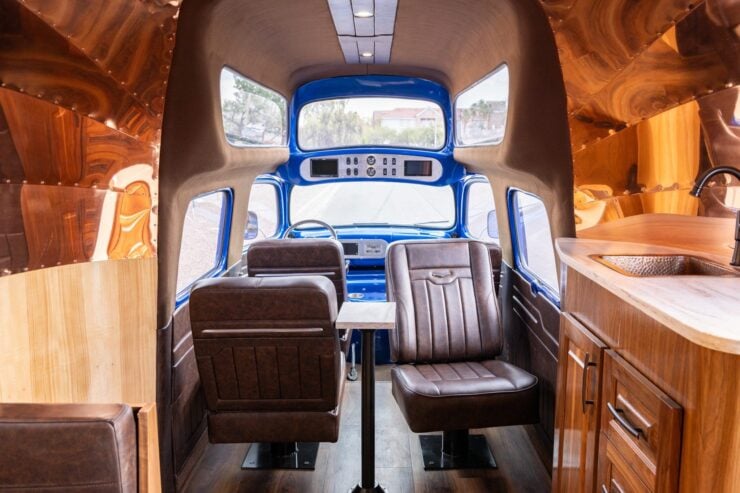
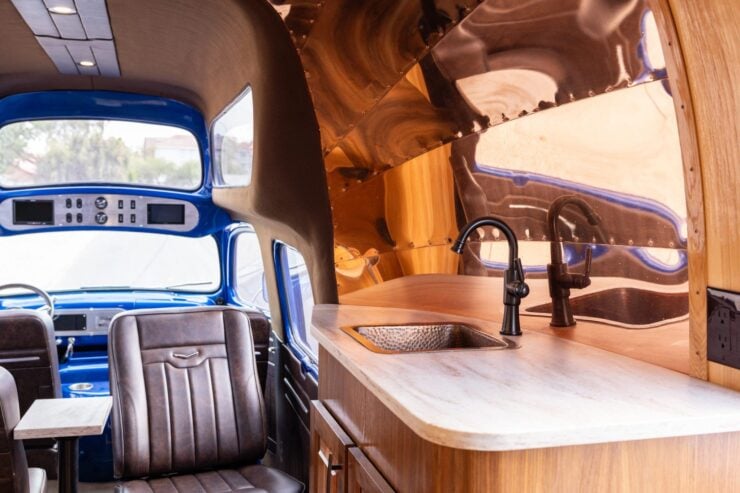
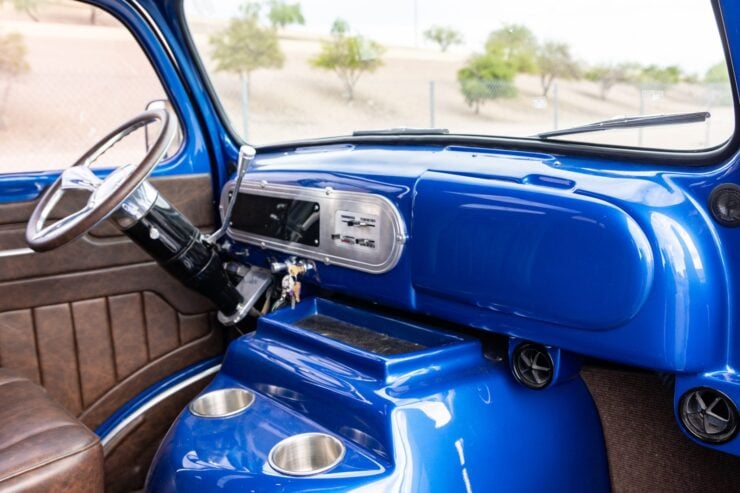
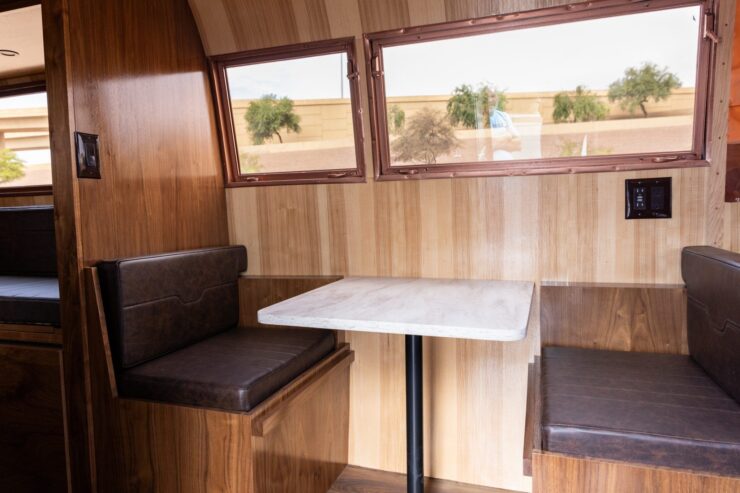
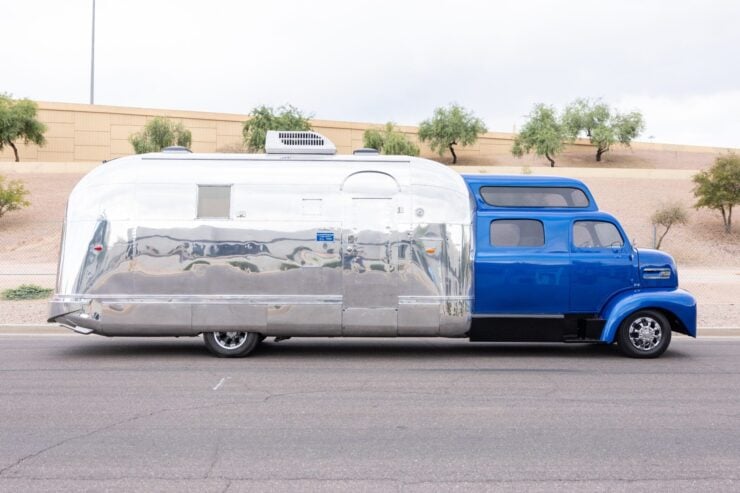

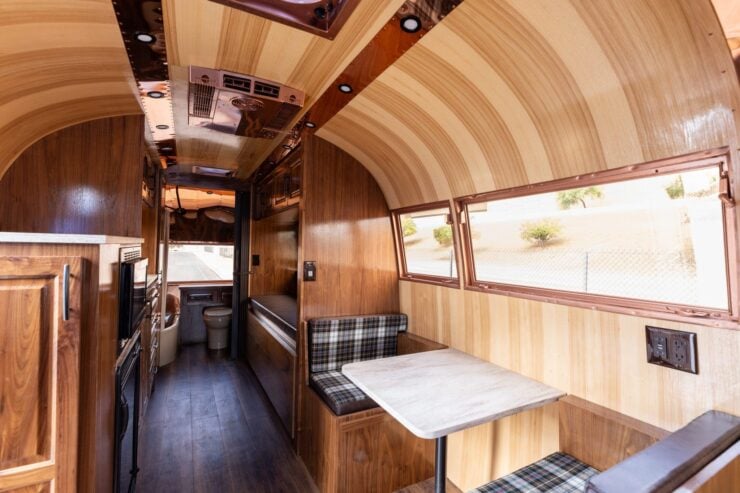
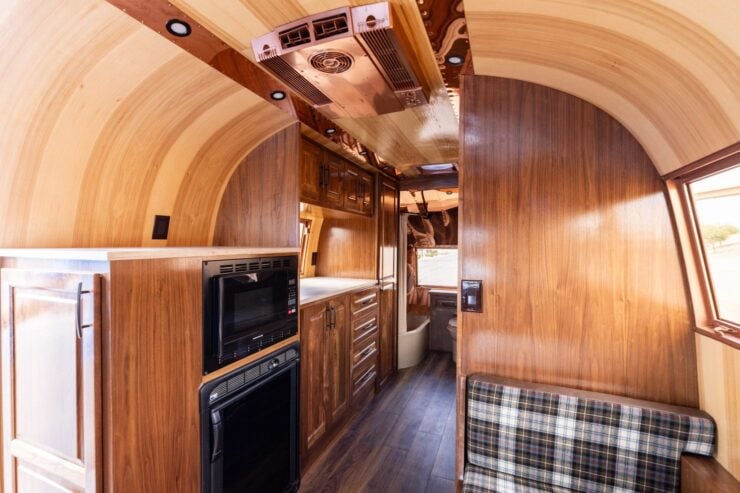
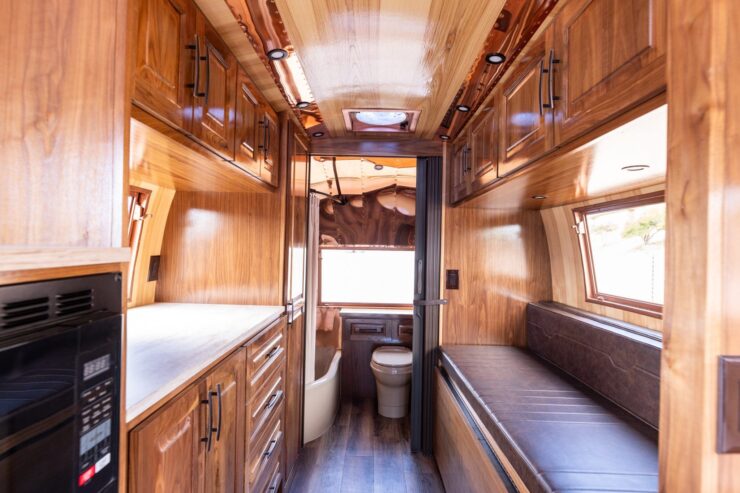
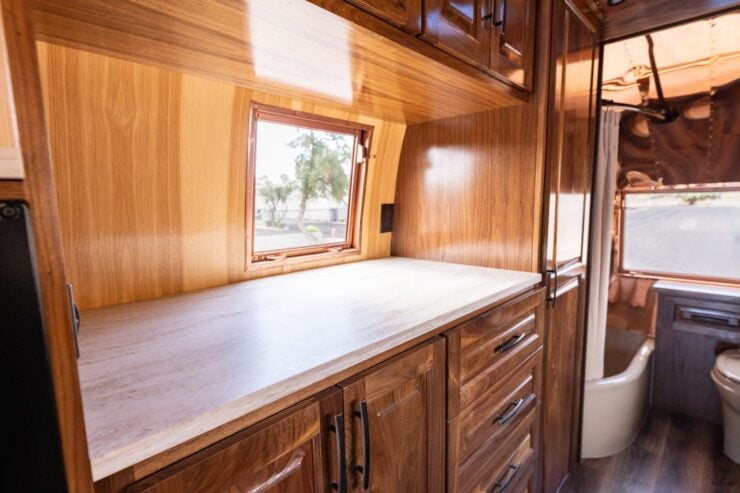
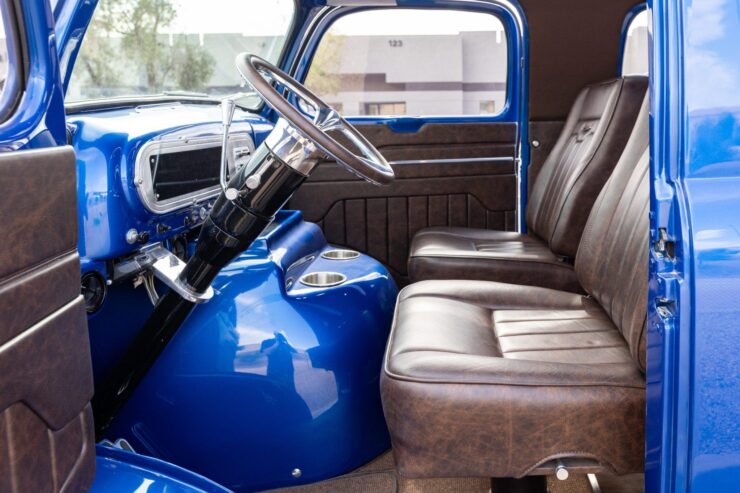
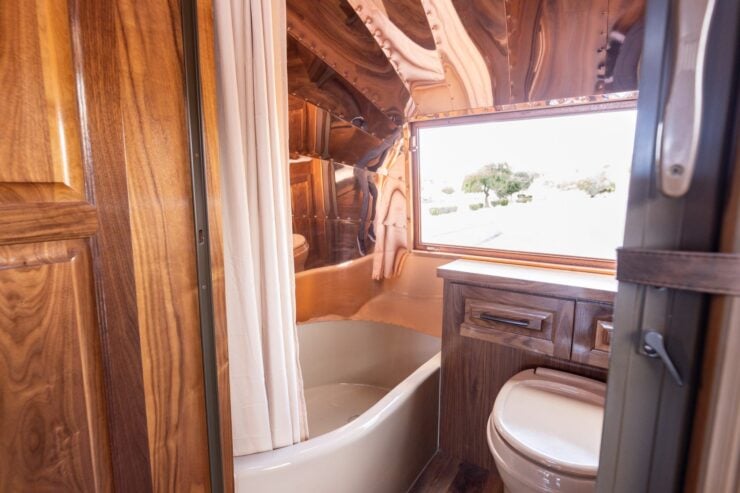
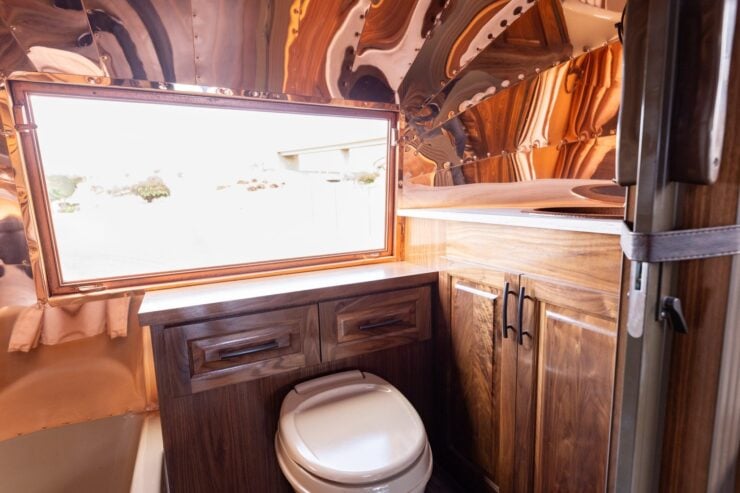
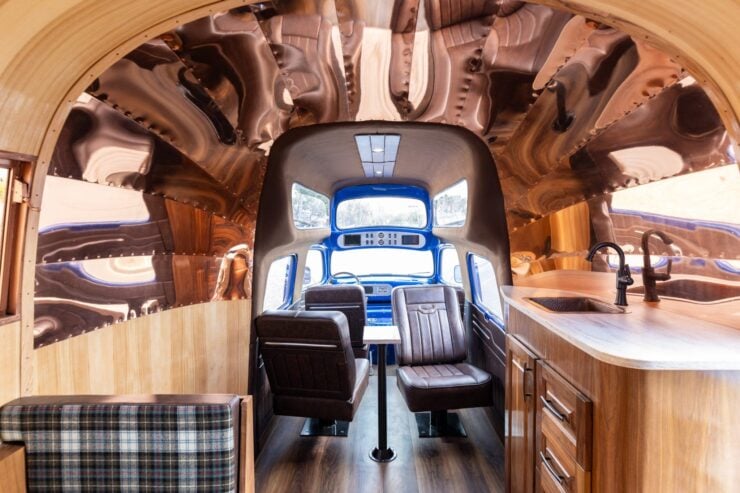
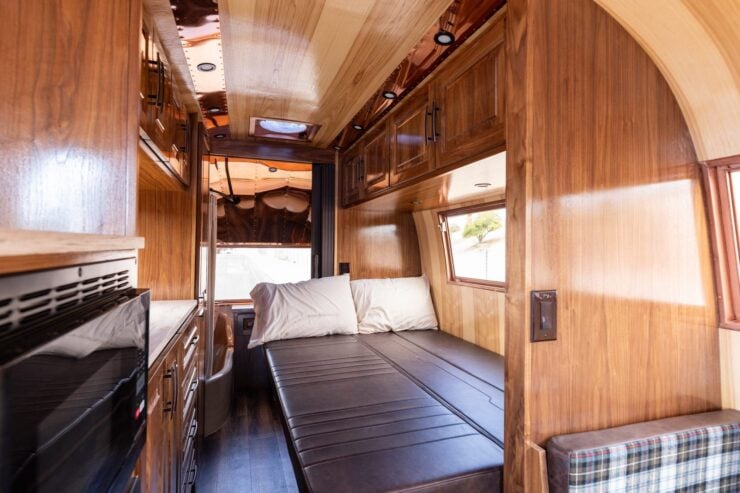
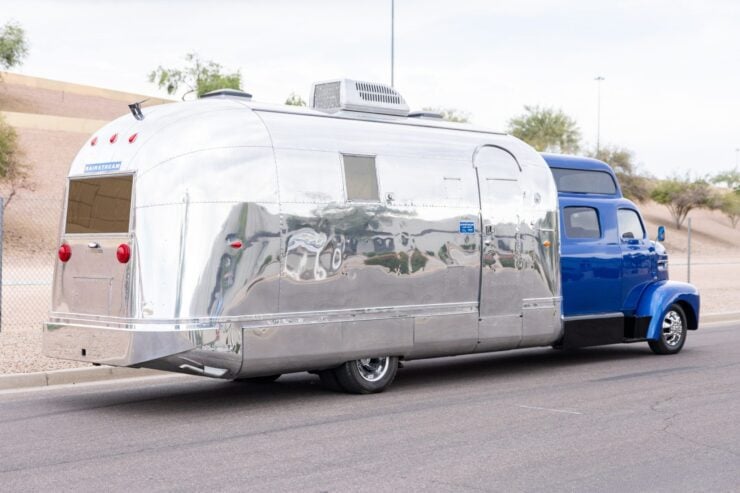
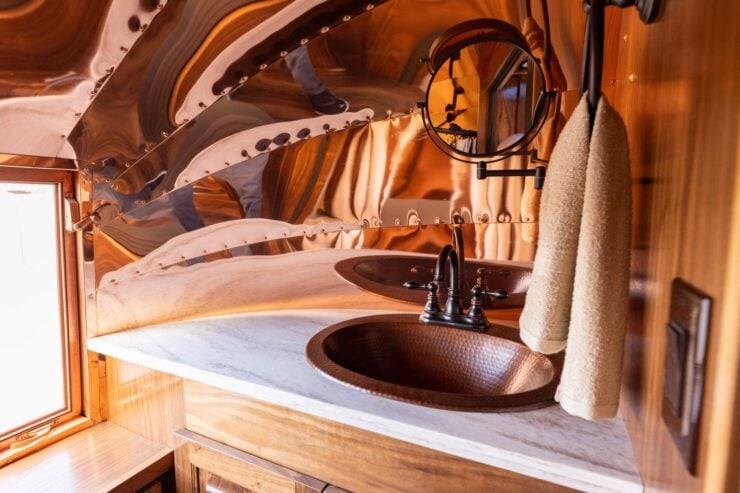
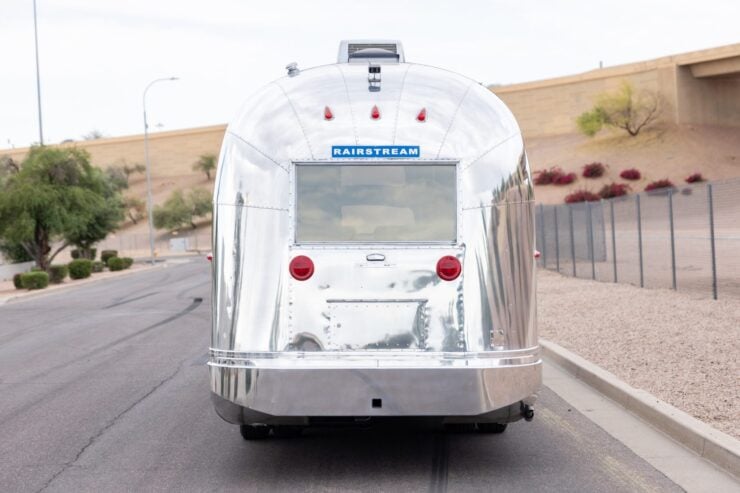
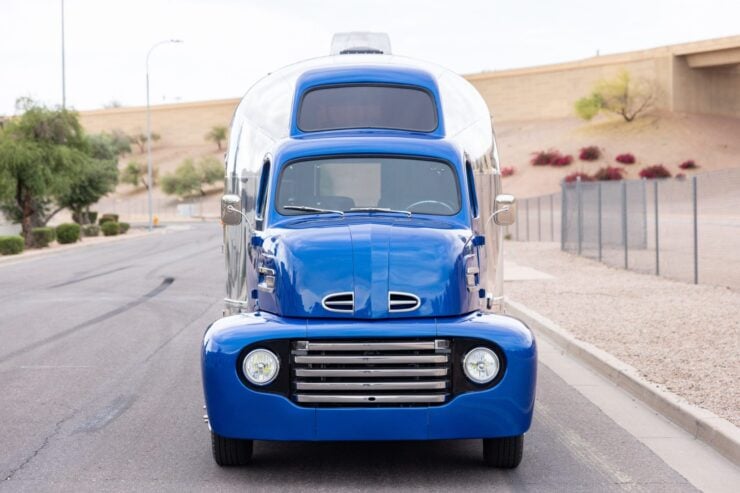
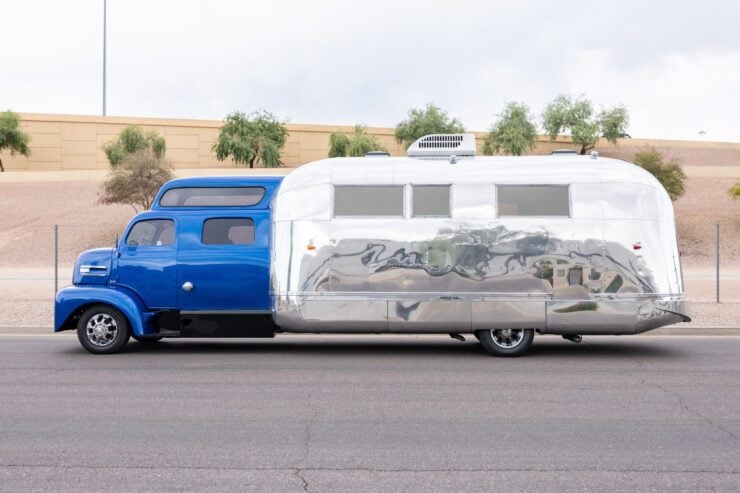
Images courtesy of Bring a Trailer

